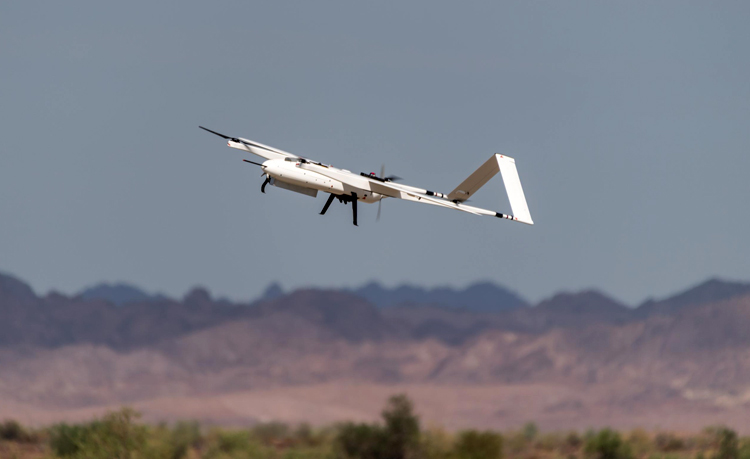INDIAN ARMED FORCES CHIEFS ON OUR RELENTLESS AND FOCUSED PUBLISHING EFFORTS

The insightful articles, inspiring narrations and analytical perspectives presented by the Editorial Team, establish an alluring connect with the reader. My compliments and best wishes to SP Guide Publications.

"Over the past 60 years, the growth of SP Guide Publications has mirrored the rising stature of Indian Navy. Its well-researched and informative magazines on Defence and Aerospace sector have served to shape an educated opinion of our military personnel, policy makers and the public alike. I wish SP's Publication team continued success, fair winds and following seas in all future endeavour!"

Since, its inception in 1964, SP Guide Publications has consistently demonstrated commitment to high-quality journalism in the aerospace and defence sectors, earning a well-deserved reputation as Asia's largest media house in this domain. I wish SP Guide Publications continued success in its pursuit of excellence.
- Indian Air Force Aims for Full Indigenous Inventory by 2047 — Air Chief Marshal A.P. Singh
- Rajnath Singh assumes charge as Defence Minister for the second consecutive term
- Interim Defence Budget 2024-25 — An Analysis
- Union Defence budget 2024
- Prime Minister Modi Flies in the LCA Tejas
- New Chapter in India-Italy Defence Ties
- Airpower beyond Boundaries
Successful SWIFT Demonstration Showcases Lockheed Martin and Altera Collaboration with OUSD (R&E), Highlighting the Future of Electronic Warfare and Microelectronics

Lockheed Martin in collaboration with Altera, an Intel Company, completed a successful flight demonstration of our 12th Generation Electronic Warfare (Gen12) transceiver utilizing Altera's Agilex™ 9 Direct RF FPGA (Multi-Chip Package, MCP-2).
The project, coined SWIFT (SHIP-enabled Wideband Transceiver Integrated Flight Test) by the Office of the Under Secretary of Defense for Research and Engineering (OUSD-R&E), established an aggressive requirement for Lockheed Martin to perform an electronic warfare flight demonstration utilizing Altera's FPGA aboard a Group 2 Unmanned Air Vehicle (UAV) in less than 12 months.
Conducted at the US Army's Yuma Proving Ground, the SWIFT demonstration represented the first time Lockheed Martin used the Altera Direct RF FPGA in a government test environment, showcasing the device's readiness to perform real-world missions. The event successfully proved the Gen12's Electronic Support (ES) capability by performing the detect, identify and locate mission against real enemy emitters in a DoD relevant environment.
Through the success of this demonstration, Lockheed Martin and Altera proved how size, weight and power (SWaP) constrained airborne platforms can be utilized to deliver electronic warfare effects, while also allowing growth for new capabilities. The technology enables a low SWaP, Sensor Open System Architecture (SOSA) aligned digital transceiver that performs the Electronic Support (ES) and Electronic Attack (EA) missions using domestically produced semiconductors.
This demonstration serves as a proof point for the importance of OUSD-R&E State-of-the-Art Heterogeneous Integrated Packaging (SHIP) program and the ongoing need for sustainable US-made microelectronics packages customized for DoD applications.
The Big Picture
- The success of the SWIFT demonstration and its profound impact as a proof point on the SHIP program was reiterated at a recent event held at Lockheed Martin's newly renovated Global Vision Center in Crystal City, Virginia. The event's purpose highlighted the Altera Direct RF FPGA's readiness to transition into a variety of DoD programs of record.
- During the event, attendees watched footage of the flight test demonstration in a pre-recorded video highlighting the capability of MCP-2, along with the rapid insertion and successful integration in a UAV.
- Keynote speakers from DoD leadership along with executives from Lockheed Martin, Altera and OUSD-R&E gathered to highlight the success of this demonstration and spoke about how the benefits enabled by the SHIP program and MCP-2 development, enable advanced electronic warfare architectures with game-changing capability enhancements.
Strategic Perspectives
"This demonstration signifies an important step forward for Lockheed Martin's strategic partnership with OUSD-R&E and Altera on ensuring warfighter access to state-of-the-art, US-made microelectronics," said Dr. Steven Walker, vice president and chief technology officer at Lockheed Martin. "The SHIP program's transformative influence on DoD capabilities bolsters confidence in these ongoing advancements and paves the way for their integration throughout the military in support of our customers' most critical missions."
"Altera's proud to participate in Lockheed Martin's demonstration along with OUSD-R&E SHIP program. Leveraging decades of leadership in chiplet development and manufacturing has led to the rapid readiness and availability of production quality, SWAP-centric MCP-2 products for future mission requirements." said John Sotir, Senior Director, Military Aerospace and Government Business and State-of-the-Art Heterogeneous Integration Packaging (SHIP).
What's Next?
- The success of this demonstration shows promise for continued collaboration with industry and commercial partners using US-built semiconductors to achieve DoD objectives.
- This technology can be used for future platforms in many different ways depending on the mission at hand. It can deliver targeting information and situational awareness for our allies.
- Lockheed Martin will continue to demonstrate Gen12 Electronic Support (ES) and Electronic Attack (EA) capabilities for customers and cultivate near-term transition opportunities into DoD Programs of Record.
Background
- The SHIP program focuses on the development, delivery and eventual transition of microelectronics devices into DoD systems. The SHIP program's objective is to create US-made, trusted microelectronics that enable significant SWaP reductions in DoD systems.
- The SHIP program is part of a broader effort to enhance US-based, secure and economically viable capabilities to support critical warfighting missions.
- As part of the SHIP program, multiple MCP devices were created in record time by Altera. Lockheed Martin was the early access partner for the transition of the MCP-2 device through the Stimulating Transition for Advanced Microelectronics Packaging (STAMP) contract.
- Through the STAMP contract, awarded by OUSD-R&E, Lockheed Martin and Altera worked to develop optimized architectures that leveraged the Altera commercial MCP-2 chip to apply specifically to electronic warfare applications, accelerating the transition of capabilities to the warfighter.





